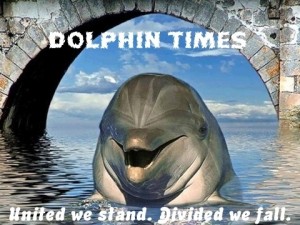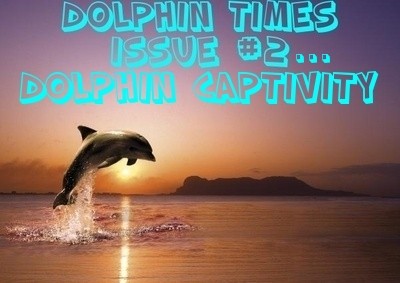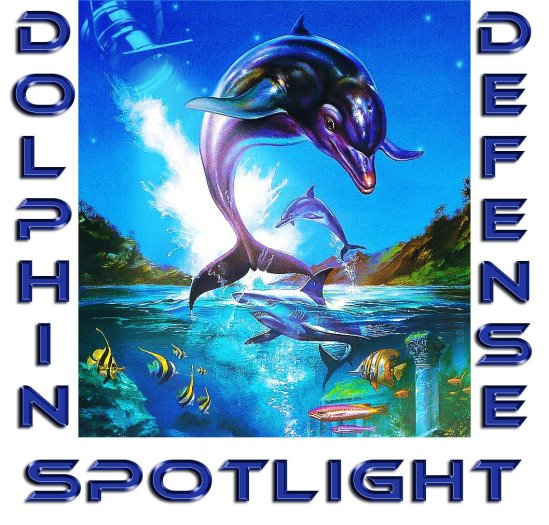Dolphin Times is a weekly article dedicated solely to dolphin-related issues. This issue will cover how the Japanese drive hunt is justified by culture, how environmental threats have affected dolphins and people, and the weekly run-down in Taiji since the last issue.
The goal of this article is to spread awareness and unite together upon global issues. Please join us in the fight…we need your voice!!!
United we stand, divided we fall.
Featured Media: Blood in the Water
This week’s featured media, in correlation with the topics covered and the beginning of Operation Trident, is a video made regarding the dolphin slaughter in the Solomon Islands. For those who did not read the last issue, the slaughter occurring in these islands is the largest dolphin slaughter, beating the more infamously known massacre in Japan.
“The largest dolphin slaughter in the world occurs not in Japanese Taiji, nor the Danish Faroes, but in the Solomon Islands. Dolphins numbering in the “tens of thousands” have been hunted and killed every year for hundreds of years according to those in the know. The carnage and suffering is exacerbated by those who promote and profit from the live capture and trade industry which was introduced in 2003 by the outside world.
Our mission and hopefully yours also ultimately, is to end what truly amounts to a Dolphin Holocaust in the Solomon Islands once and for all.
This said, we have to point out that at first glance the problem seems immensely complex involving government officials and policies, corruption, bribery, foreign tuna fleets, legal and illegal, foreign traders, domestic traders, dolphin-tooth currency, dolphin-meat consumption, foreign tourists, foreign activists and their foibles, foreign animal welfare organizations and their failings, and, most of all, the age-old native culture itself.
Yet in this day and age barbaric customs based on ancient culture do not justify this slaughter due to the fact that these tribes have stated that are more than ready to give up this slaughter, but do not want to starve in the process!
What it would cost per annum is minimal in any currency other than Solomon. When we hear the local chiefs mention that $1,000 USD to $2,000 USD a year would give the life back to thousands of dolphins, it saddens many a heart to realize that with such a minimal subsidy so many lives could be saved.
This is the bottom sad line:
Two tribes doing the hunting would stop with the aid of about $2,500 USD total annually. This amount would feed members of both tribes for a year. And if there were no hunts to feed the coffers of the dark traders, they would have one hell of a time actually acquiring and hiding their terrible captures and the transport of dolphins into a life of captivity.
Accordingly, the solution when found, might still be comparably complex. There is no simple or simplistic fix without the intervention of the Royal Family.”
Japanese Dolphin Killing: Tradition or Cultural Fallacy?
Japan kills thousands of dolphins every year for profit and so called “sustenance.” Many people in the world now know this, whether they care or not. But how did this mass dolphin slaughter begin? In this section we will explore the common pro-slaughter argument that it is part of Japanese culture.
The drive hunt in Taiji, Japan (drive hunts occurred in many more cities but we will focus on just this one) began in the 1970s. Many sources, including the fishermen and ever-so-unreliable Wikipedia, claim that it has been a cultural tradition for hundreds of years. Given, whale and dolphin hunting has existed that long, but the drive hunt has only lasted a few decades. Japan, being a nation founded in cultural pride, has a clear but understandable bias towards this issue. Dolphin drive hunting (paying attention to wording is key…do not be fooled!) is not cultural because it has no sense of antiquity or national unity. Only a small percent of Japan participates in and supports the drive slaughter of dolphins, whereas nearly all of them uphold the importance of family, a tradition Japan has endeared throughout its history unlike the drive hunt.
Furthermore, even if the drive hunt was cultural that still doesn’t make it acceptable. I mean slavery was part of American history for a long time and many thought it was okay. But we all in America regard that as immoral now. It is important for cultures as diverse and wonderful as Japan’s to evolutionize and keep the things that make the nation so amazing while changing those that will in the end do the nation harm.
It is understandable that pride has been the reason for Japan’s reluctance to end whaling and the drive hunt. They are afraid the rest of the world will dominate them. That has been their fear throughout history. And that fear and pride clouds their minds. In order for a culture to stay alive, it must uphold traditional values while collaborating and taking a spin on other’s cultures. Take the Philippines for example. They have upheld their culture in working together while adapting things such as importance of family and food from Asia, technology and government structure from America, and vocabulary from China and Japan, not to mention the US. Their culture is now extremely unique and powerful.
In order for Japan to overcome its nuclear disasters, dying seas, and world problems, they must let go of their pride and broaden their minds. I would hate to lose such a unique nation filled with cultural beauty because they were too proud to let go of wrongs justified by culture. We, in a critical state of our environment, must see things as they are. The oceans are dying. Nuclear waste is seeping into the now radioactive ocean. If Japan wants their nation and the world to survive, they must set themselves free from the chain of pride and let their culture follow the course of evolution.
A Radioactive Ocean: Mercury Poisoning? Oh My!
As many are aware, our oceans are unhealthy and dying. Not only do they face an over-exploitation of resources, but severe pollution from factories and power plants. In the past two years after they were hit by a tsunami, Japan’s nuclear power plants have malfunctioned. Tons of nuclear waste has leaked into the oceans. Russian scientists tried to extend a hand of help to Japan, but they refused saying this was their problem.
What effect does this have on the oceans? 300 tons of toxic water has leaked (date September 4th, 2013) from the reactors so far. Though scientists claim that because the radiation is diluted from the currents surrounding Japan it doesn’t pose a health problem to humans, this radiation can increase from plankton to fish to large predators (such as dolphins), and then to humans in a process called biomagnification. Considering how unsafe the food supply already is from pollution of the ocean, the radiation leak only amplifies the worry, especially since Japan’s diet consists highly of ocean life and 80% of the U.S. seafood supply comes from the nation.
This just goes to show how important the dwindling ocean is to our, and all of life’s survival. Since this article focuses only on dolphin-related issues, we will apply this to mercury poisoning of individuals who consume dolphin meat. Since biomagnification was discussed earlier, we will start from the beginning of the pollution cycle. Mercury is put into the ocean in various ways. The most common is from waste emanating from industrial plants that either enters the ocean as runoff or from being dumped into the water. It may not enter as a large amount, being consumed by plankton. But as it goes up the food chain, from one trophic level to the next, the number greatly increases. When the mercury enters dolphins through the fish they consume, it is found at 2,000ppm. And that is consumed by people who eat dolphin meat (which is often mislabeled as whale meat coming from Antarctica), causing a serious health problem in mercury poisoning, a problem Japan knows all too well from the Hiroshima Bomb and Minamata.
The Minamata catastrophe is a perfect example of biomagnification and mercury poisoning. An industrial factory in the western town Japan known as the Chisso Corporation produced a chemical called acetaldehyde, which is used to produce plastic. Mercury entered as waste into the Minamata Bay as a chemical that can enter the food chain: methyl mercury chloride. And the biomagnification process began. Mercury entered the humans in the city through the mass consumption of fish and shellfish, causing untimely death and despair. Symptoms of mercury poisoning are not pleasant and essentially kill the brain, causing partial paralysis and muscle weakness. Civilians didn’t know what hit them.
And sadly these same problems are occurring again as the ocean grows more and more polluted. Killing and eating dolphins not only is a cruel process but kills those who eat it too. It was appalling to hear that it was almost made a permanent part of the school lunch in Taiji. So please, stop the slaughter and let both human and dolphin children live.
Weekly Taiji Update 9/17-9/27
Since the slaughter of Pilot Whales on the 17th, no dolphins of any kind have been killed on the 8 hunting days that have passed. Whether it be from strong weather conditions or no dolphins to be found, the cove has remained blue for over a week. But could this mean the dolphin population passing Taiji is running low? Or have the dolphins found a new migration route bypassing the slaughter? Whatever the reason, the good news is that no innocent blood has been spilled, no families torn apart for a week. Let us hope and pray this continues and the slaughter ends, leaving the sea in blue forevermore. But we cannot just wait for this to happen. We must take the initiative, get out in the field, and make some noise!!! The next issue will go in depth on ways we can help make a difference. Until then, let the world hear all our voices together pleading for this to end!
United we stand. Divided we fall.
Many thanks for reading this article and I hope you found it a good read. For suggestions regarding the next article or questions regarding what you read here please email dolphindefender@globalwildlifewarriors.org and expect a response within 48 hours.
Zach Affolter
Global Wildlife Warriors
“the dolphin man”
Sources:
http://www.seashepherd.org/cove-guardians/cetacean-kill.html
http://en.wikipedia.org/wiki/Dolphin_drive_hunting#Japan
http://en.wikipedia.org/wiki/Taiji_dolphin_drive_hunt#History
http://www.cnn.com/2013/09/04/world/asia/japan-fukushima-nuclear-crisis-explainer/index.html
http://www.nbcnews.com/science/fukushimas-radioactive-ocean-plume-due-reach-us-waters-2014-8C11050755
http://switchboard.nrdc.org/blogs/mmckinzie/fukushima_radiation_risks_from.html
http://toxics.usgs.gov/definitions/biomagnification.html
http://www1.umn.edu/ships/ethics/minamata.htm
http://www.medicinenet.com/mercury_poisoning/article.htm
All text has been originally written by Global Wildlife Warriors and may only be reproduced if appropriate credit is given. Links to facts are provided that were used to write this article. No statements, unless otherwise stated, were copied and pasted into this piece of writing.




